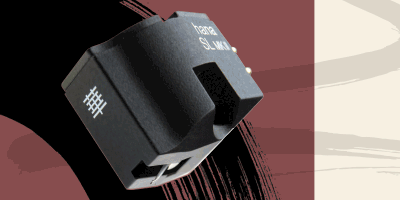The following are policies at Positive Feedback regarding Copyright (use of images, quotes, etc. that are used in articles and reviews) and the use of our own content by others in the form of quotes and reprints. This information has been shared with all our writers and contributors.
The Positive Feedback guidelines for the use of photographs, drawings, third-party content, and other sources from the Internet, revision 1.0...
Positive Feedback magazine publishes articles from its editors and other contributors that may contain photographs, drawings, and other forms of art/information derived from Internet research/sourcing. Since some—and even most—material obtained in this fashion may be copyrighted, restricted, or subject to licensing or other terms and conditions, this document sets forth guidelines for our editors/reviewers/contributors to follow when submitting work containing such content. Contributors to Positive Feedback are responsible for complying with our guidelines with their submissions, and for obtaining all permissions required for their work. The editors of Positive Feedback will not perform this task for our contributors; the task is yours.
Please understand that the world is quite often a litigious place, and that it's wise to assume the worst, instead of assuming the best. Remember that you should always attribute sources/provide links, whenever possible.
Positive Feedback itself is a copyrighted online publication, with all rights reserved. We require all republication of our content/photographs obtain prior permission from Dave Clark or me, and defend our content whenever we find a violation. We therefore make every effort to comply with copyright requirements, and will remove any materials that we find does not conform to our guidelines.
The guidelines
- With regard to quoting copyrighted written material, it is best practice to get written permission to quote any material. Even short quotes from creative works can be subject to lawsuit if permission was not obtained. If you cannot obtain permission to quote, then you'll have to summarize ideas in your own words, while still attributing the original source. Note that simply providing a link to another site for ease of reader access is generally OK…but don't directly quote content. And remember: Always attribute any sources, even if you are summarizing them in your own words. For example, "Andreas Koch believes that DSD is a superior format for all new digital recordings" is not a direct quote from something he's written, but could be a summary of his position based upon his writing, interviews, etc. Honor your sources by providing proper citations, including Web links where appropriate.
- In the case of content or specifications from a company product Web site, or in promotional materials (e.g., promo content on a USB drive given to you at an audio show as a member of the audio press), you are generally OK to quote sections, provided that you put quotations marks around direct quotes, and provide the link to the original material. Please do not overdo it, however. Do not quote entire articles, or major portions of online content; try to summarize these in your own words, citing the source. You can just give the link for extended material or specifications; that may avoid clutter or hassles.
- In the case of photographs, your own work is, of course, OK to publish. If manufacturers have a media materials section on their Web sites to be used by reviewers, then that's fine. The use of cover art for album reviews is also generally considered to be OK, according to all sources that I've checked. For just about everything else, it is necessary to obtain written permission of the artist, agent, agency, or owner of the copyright. This includes photographs included within a promotional package for recordings. As a general rule, such images should be assumed to require explicit written permission for republication. When in doubt, contact the agent or agency via email, with a specific request for the image(s) that you wish to use in your article. Unless you have such written permission from the artist, label, agent/agency, you will not be allowed to use such photographs in your contributions to Positive Feedback. Any such images will simply be pulled from your final layout.
- Note that there are some images that may be available via the Wikipedia Commons opening licensing. You'll find this at https://commons.wikimedia.org/wiki/Main_Page. There are millions of usable images there, but you'll want to be sure that the image you want to use is licensed for commercial republication. Check the image license terms and conditions to be sure.
- The same guidelines that apply to photographs also apply to drawings, charts, and other creative work that is protected by copyright. Also included are audio tracks/samples, which should be assumed to be protected. Proceed according.
- Note that ultimately you are responsible for the content of your submissions. If a source/photographer/agent/agency/owner takes issue with misuse of copyrighted material, it will could well come back to haunt you. Keep in mind that Positive Feedback is a major audio publication, with hundreds of thousands of verified readers per month. We get read; your work will be seen. Don't put yourself at risk; don't put Dave Clark and me in the position of having to confront you. We do not like to do that.
- The fundamental guideline: When in doubt, contact the Editor-in-Chief! Don't make mistakes; don't have to beg for forgiveness; don't put the magazine in a bad place…just check with me before you submit material that you have questions about. We have access to PF's legal counsel, and to other professionals in the industry; we can help you to get it right.
Remember: If after reviewing the above, you have any questions, please contact the Editor-in-Chief, Dr. David W. Robinson, at [email protected].
Resources
Following are some online resources about copyrighted materials, fair use, and considerations for republication. Positive Feedback makes no representations about the correctness or legal value of this content. It is provided to our contributors for further reading and research.
Note that the "Fair Use Checklist" from Columbia University is a very helpful form for evaluating your work. (Observe also that it is provided under the Creative Commons license from Wikimedia; see the Wikimedia link below.)
In no particular order or ranking:
http://fairuse.stanford.edu/overview/fair-use/what-is-fair-use/
https://copyright.columbia.edu/basics/fair-use/fair-use-checklist.html
https://janefriedman.com/permissions/
http://fairuse.stanford.edu/overview/fair-use/cases/
https://commons.wikimedia.org/wiki/Main_Page
Positive Feedback's Reprint Policy for the use of content from the magazine...
Positive Feedback grants you the right to reprint, on your website and/or in print advertisements, up to, but no more than three (3) quoted sentences from any one reviewer as they appeared in Positive Feedback. These quotes must appear in their original form with no alterations. The reviewer's name and issue number must be noted at the end of each quote as noted below;
"….," Joe Smith, Positive Feedback, Issue 90: March - April 2017
You may also have a direct link to the review as well – "Read this review at Positive Feedback". But you may not post or copy any images, pages, and/or reviews in totality directly into or onto a site or through printed and/or electronic material.
If you would like to use the whole review as a paper reprint/promotional for shows and/or promotion, please contact us for the specific requirements and permissions.




























